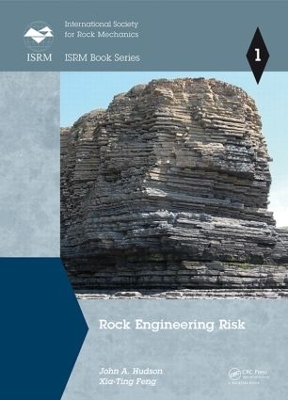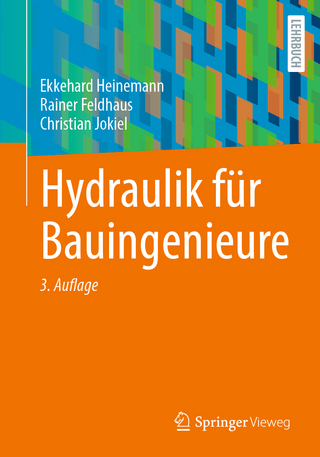
Rock Engineering Risk
CRC Press (Verlag)
978-1-138-02701-5 (ISBN)
Written by two eminent authors, the two most recent past-Presidents of the International Society for Rock Mechanics (ISRM), this modern and well-illustrated guide on Rock Engineering Risk complements the authors’ previous 2011 book on Rock Engineering Design, also published by Taylor & Francis. The book will benefit engineers, contractors, clients, researchers, lecturers and advanced students who are concerned with rock engineering projects in civil, mining, geological and construction engineering worldwide.
John A. Hudson graduated from the Heriot-Watt University, UK, and obtained his PhD at the University of Minnesota, USA. He has spent his professional career in consulting, research, teaching and publishing in engineering rock mechanics, and was awarded the DSc. degree by the Heriot-Watt University for his contributions to the subject. He has authored many scientific papers and books, and was the editor of the 1993 five-volume “Comprehensive Rock Engineering” compendium, and from 1983–2006 editor of the International Journal of Rock Mechanics and Mining Sciences. Since 1983, he has been affiliated with Imperial College London as Reader, Professor and now Emeritus Professor. In 1998, he became a Fellow of the UK Royal Academy of Engineering and was President of the International Society for Rock Mechanics (ISRM) for the period 2007–2011. In 2015, the 7th ISRM Müller Award was conferred on Professor Hudson in recognition of “an outstanding career that combines theoretical and applied rock engineering with a profound understanding of the basic sciences of geology and mechanics”. Xia-Ting Feng graduated in 1986 from the Northeast University of Technology and obtained his PhD in 1992 at the Northeastern University, China. He was then appointed and acted as Lecturer, Associate Professor and Professor at the same university. In 1998, he was admitted by the Hundred Talents Programme to the Chinese Academy of Sciences (CAS). Subsequently, he permanently joined CAS’s Institute of Rock and Soil Mechanics at Wuhan, China. In 2003, he obtained the support of the China National Funds for Distinguished Young Scientists; in 2010, he became a Chair Professor of the Cheung Kong Scholars’ Programme, Ministry of Education, China; and, in 2009, he was elected as President of the International Society for Rock Mechanics for the period 2011–2015. He is currently Director of the State Key Laboratory of Geomechanics and Geotechnical Engineering in Wuhan. Additionally, in 2012, Professor Feng became the Co-President of the Chinese Society for Rock Mechanics and Engineering. He has made original contributions to the subject of ‘intelligent rock mechanics’ and his methods have been applied to large rock engineering projects in China and other countries.
Preface, Acknowledgements: International Society for Rock Mechanics, About the authors, 1 Introduction and background, 2 Uncertainty and risk, 3 Rock Engineering Systems (RES), auditing and Protocol Sheets, 4 Rock fractures and in situ rock stress, 5 Radioactive waste disposal: overcoming complexity and reducing risk, 6 Risks associated with long deep tunnels, 7 Risks associated with hydropower cavern groups, 8 Concluding remarks, Appendix A: Cavern risk events during construction, Appendix B: The Chinese ‘Basic Quality’ (BQ) system for rock mass classification, References and bibliography, Colour plates
| Erscheint lt. Verlag | 5.5.2015 |
|---|---|
| Reihe/Serie | ISRM Book Series |
| Verlagsort | London |
| Sprache | englisch |
| Maße | 174 x 246 mm |
| Gewicht | 1336 g |
| Themenwelt | Naturwissenschaften ► Biologie ► Ökologie / Naturschutz |
| Technik ► Bauwesen | |
| Technik ► Umwelttechnik / Biotechnologie | |
| Wirtschaft | |
| ISBN-10 | 1-138-02701-4 / 1138027014 |
| ISBN-13 | 978-1-138-02701-5 / 9781138027015 |
| Zustand | Neuware |
| Informationen gemäß Produktsicherheitsverordnung (GPSR) | |
| Haben Sie eine Frage zum Produkt? |
aus dem Bereich


